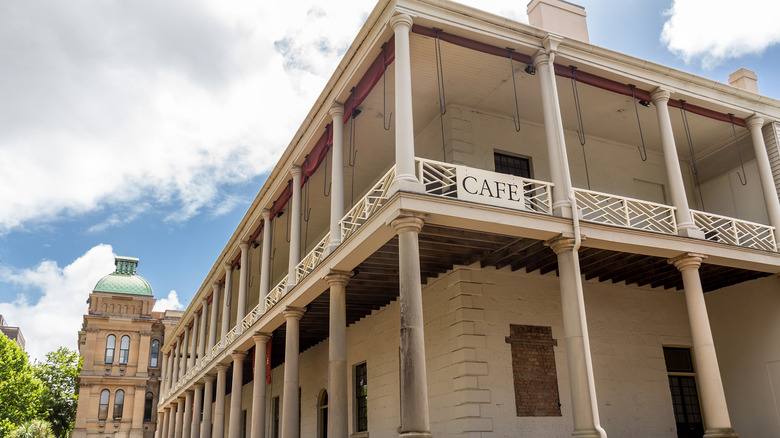What Was The Sydney Slaughterhouse?
Depending on who you talk to, Australians are either very proud or quietly ashamed that the modern-day nation — parts of it, at least — was originally founded as a penal colony. What this meant was that the United Kingdom took mostly petty criminals who would have otherwise been filling up their crowded prisons and instead exported them to Australia, where they would be put to work (via BBC).
In other words, the entire continent, at a time not too long ago, was little more than a glorified prison. There were minds, though, who envisioned the Australia we know today: a modern, developed country with a booming economy, a global pop culture reach, and a chain of steakhouses that borrows your name. Along the way, though, there were a number of hiccups and bumps in the road. After all, you don't build a world-class country on your first try. And sometimes you set out to build a state-of-the-art hospital, and you get stuck with a roach-infested, blood-soaked mess with a nickname borrowed from the meatpacking industry. And if that seems oddly specific, just read on.
The Sydney Hospital was built by rum importers
Officially known as simply Sydney Hospital, the facility that would later be better known as the "Rum Hospital" or the "Sydney Slaughterhouse" was the brainchild of Lachlan Macquerie, who served as the governor of New South Wales from 1810 to 1821, and was dedicated to developing it into a full-fledged nation. The first step, for Macquerie, was to start building the basics of civilization, including a state-of-the-art hospital. When the British Treasury refused to send him the money to build one, though, Macquerie had to turn to less orthodox funding channels.
Macquerie's solution was to persuade some liquor importers to build it for him, in exchange for a total monopoly on the Australian liquor trade (via Culture Trip). And if hiring some rum-runners to throw a hospital together sounds crazy to you, you obviously lack the imagination of a 19th-century Australian governor, but also you probably have a point. The facility's construction was widely criticized, even when it was brand-new, with a shoddy foundation and walls that were overrun with vermin in just a few years. The place needed repairs almost as soon as it was built.
All that, though, is to say nothing of the quality of care that was available there, which was nothing short of downright horrific.
The Rum Hospital was a perpetual horror show
Medicine has progressed at light speed in the last century, but in the 19th, most of it was still based on the literally ancient "four humors" theory. In other words, many diseases were thought to be the result of having "too much blood," so you can imagine how the treatments went. One hospital assistant, Henry Cowper (quoted by the Sydney Living Museums), relates his experience in removing five pounds of blood from a patient in a single day, and then expressing frustration when said patient "dropped down Dead."
Some of the other cures ("cures") employed in the hospital, as taken from the notes of surgeon William Redfern (quoted, again, at the Sydney Living Museums), include a treatment for sore eyes made from lead and opium and a cure for tuberculosis sores that was comprised of rubbing them with the leg of a poisonous toad, which would "cause the parts to swell very much for about 12 hours, and give Violent pain." Add in poor ventilation, overcrowding, and the fact that anesthetic hadn't been invented yet, and you had a hospital that sick inmates would literally beg not to be sent to — hence the "Slaughterhouse" nickname (via The Sydney Morning Herald).
Given this sordid past, you might be shocked to learn that the Slaughterhouse actually still stands to this day, housing both a mint and New South Wales' parliament. Which proves, we guess, that Macquerie knew what he was aiming for — even if he had an unusual way of going about it.


